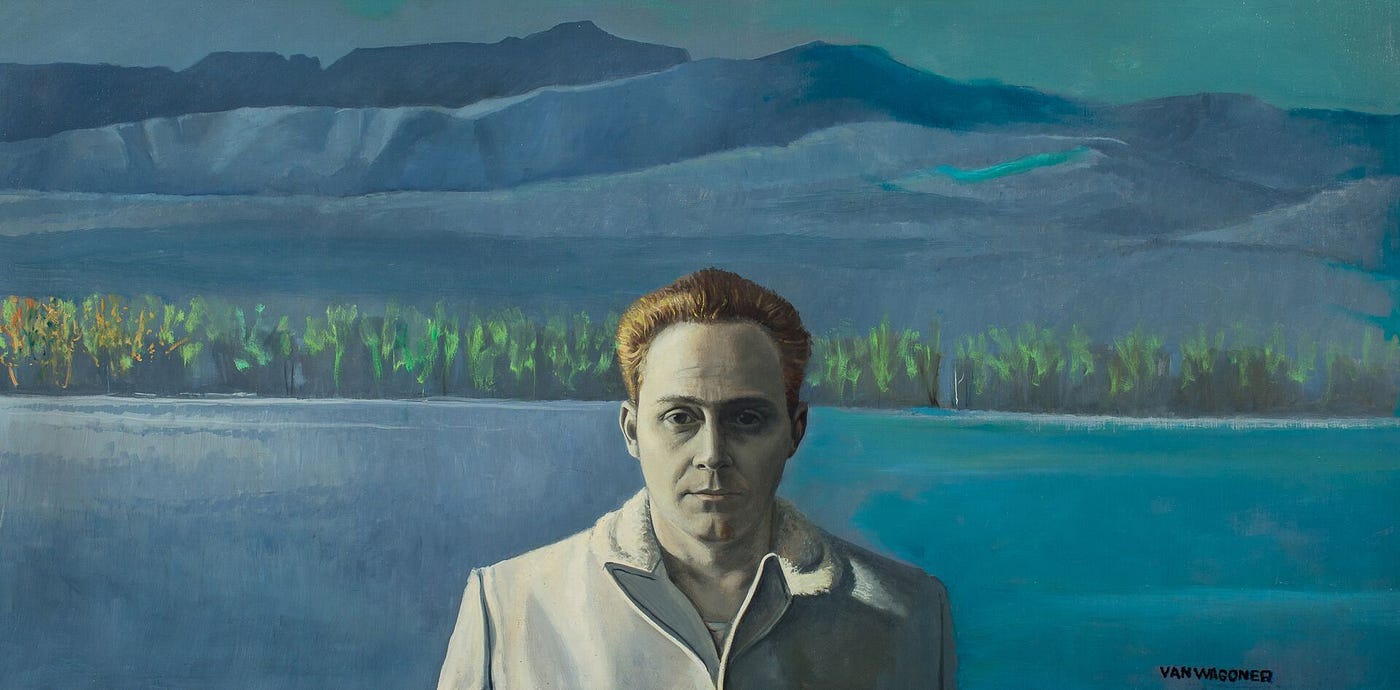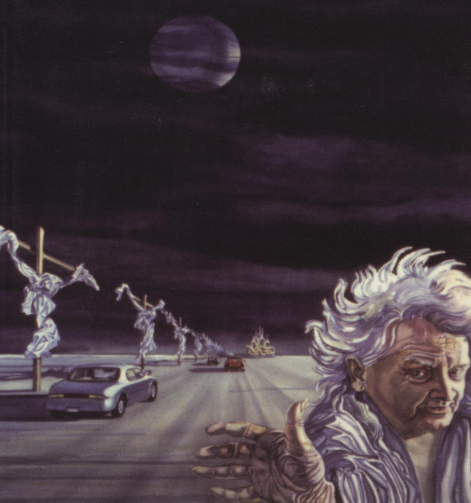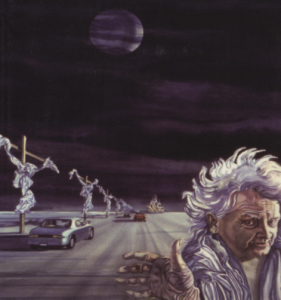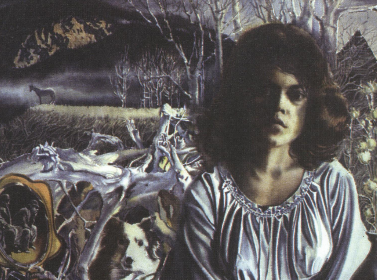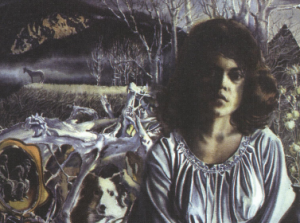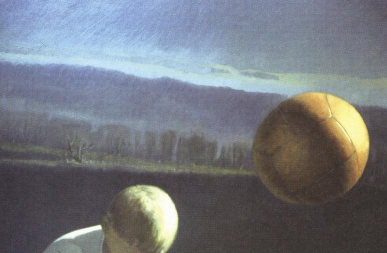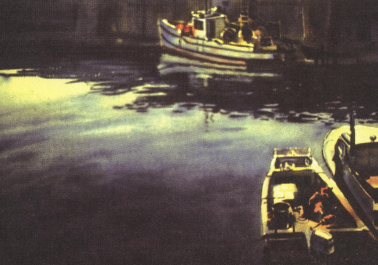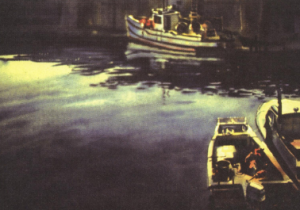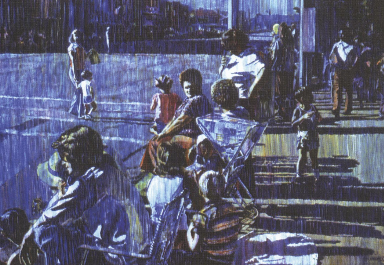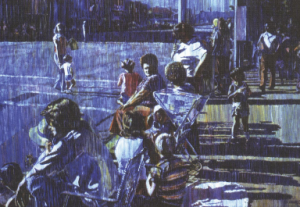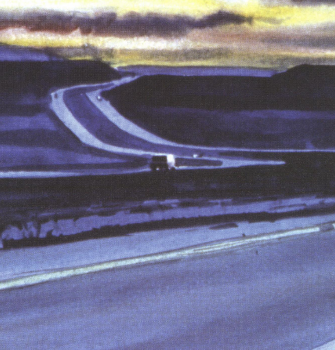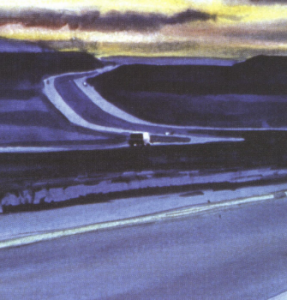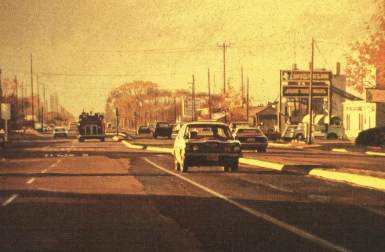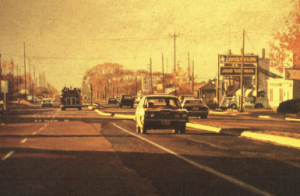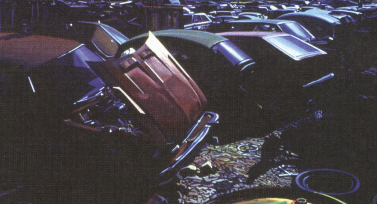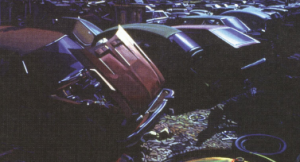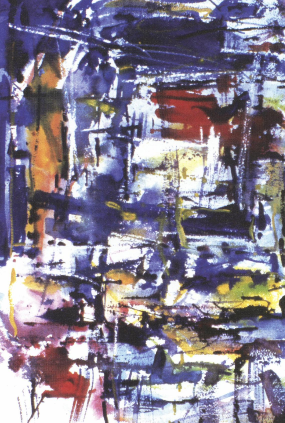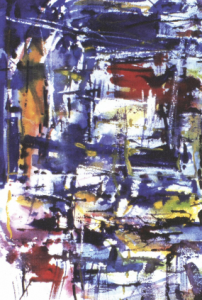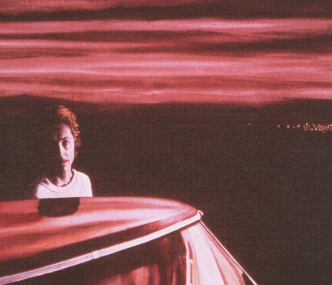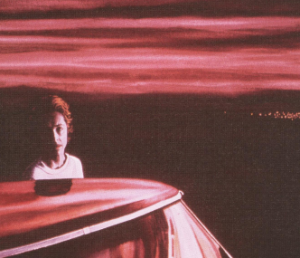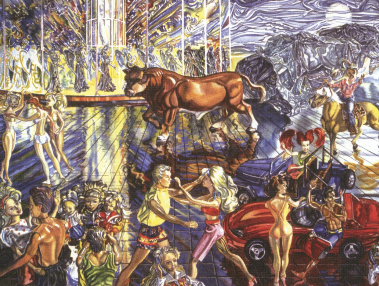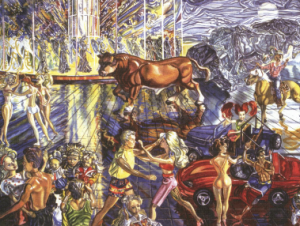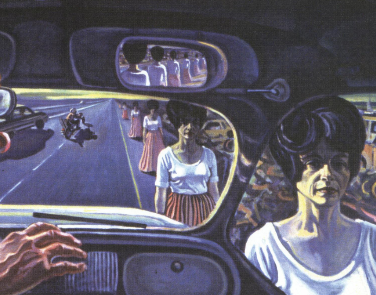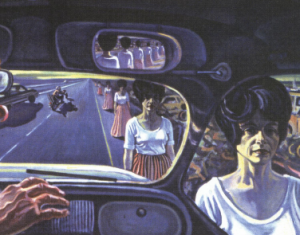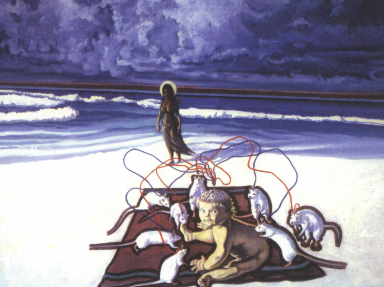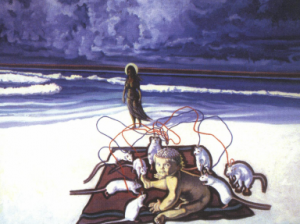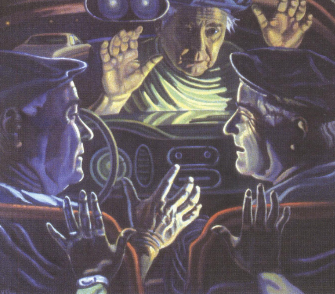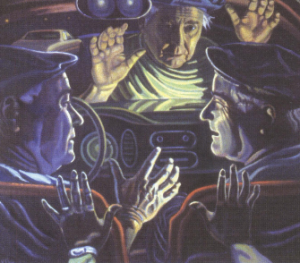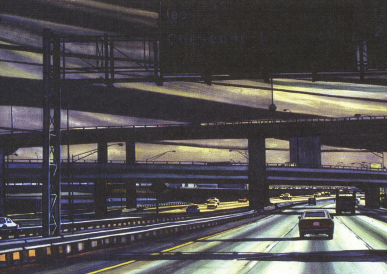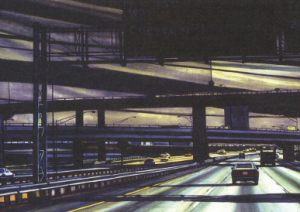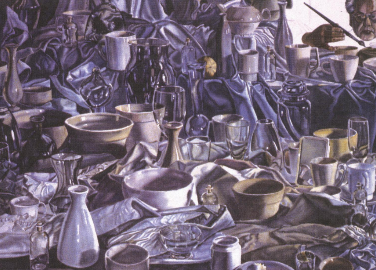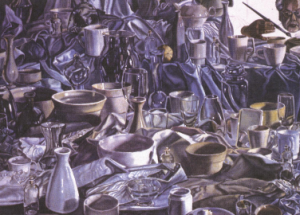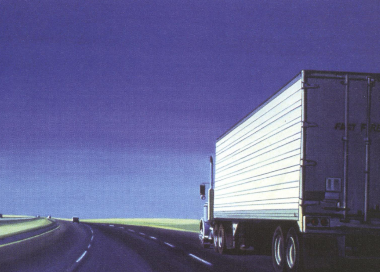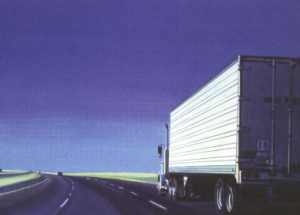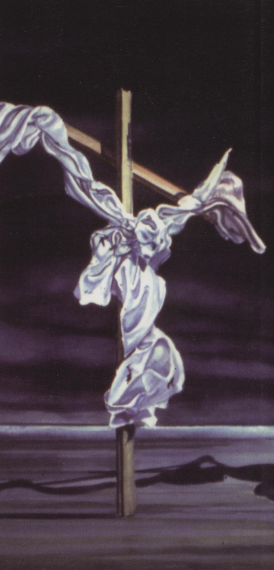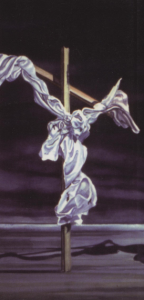Richard J. Van Wagoner was born in Midway, Utah, in 1932, lived in California for a few years and then returned to Utah where he received his education. He graduated from Davis High School and Weber College and then received a Bachelor of Arts from the University of Utah. He earned a Master of Fine Arts from Utah State University in Printmaking. Then he received another Master’s degree, this one in painting from the University of Utah. In 1959, Van Wagoner began teaching at Weber State College in Ogden. Originally, he taught many different art classes; but later he specialized in watercolor, drawing and painting. He was chairman of the department of art from 1975-1981. Now retired, he continues to paint and exhibit throughout Utah and the United States. During the 1960s and 1970s, Van Wagoner painted figures in landscapes. Later, his work increasingly depicted the western urban landscape of freeways and automobiles against a backdrop of inner-city and suburban vistas. Van Wagoner has always been interested in the ordinary, unposed moments of daily life and in recent years his subject matter has focused on autos, trucks and highways. Donor Bank, his 1990 oil painting, is a perfect example of his shift to painting urban landscapes with automobiles. Van Wagoner says he has always loved or hated cars. He feels the transportation system dominates our lives and is the greatest manifestation of man’s interests, needs, and activities. The title Donor Bank reflects this domination by comparing the use of used parts from wrecked cars to the use of donated human organs. The realism of this painting reinforces Van Wagoner’s comment on the importance of cars in our lives. Artist Statement from weber studies/spring 2001 “We are bombarded by the social problems of a complex world. Should the artist comment about the injustices in our society? It seems impossible to me that any artist, aware of the growing social issues of our time, could paint pretty landscapes. It is interesting that pretty landscapes remain the popular genre of our western society. “My heroes were discovered early in life. They were courageous, righteous, uncomplicated and magnificent. But the conservative environment of my youth repressed flexibility of thought and an investigative attitude into life. It is taking me a long time to become a citizen of the Twenty-first Century. Having been given all of the answers early, I feared asking questions—to investigate the mysteries was evil. Consequently, my ignorance has been (is) the greatest of evils. Much of my art reflected (perhaps reflects) the sanctity of my ignorance. “Experience and time have humbled me. Now, as an old man, light elucidates, not so much in solutions, but in query, wonder and amazement. Existence becomes more complex, but I revel in the questioning. “The traditional, academic training that I received earlier in life has provided the tools for developing the surreal, complex imagery of my recent work. In making a painting, I start with an object from nature or from the man-made world. It may be from reality or from my imagination. Perhaps it has no relevance to anything that I have been thinking about. But it must be an object that interests me in ways that I may not recognize or that may be difficult to verbalize. Once painted, the illusion on the canvas causes me to react again in ways that may appear to be irrational. I continue to add images in this fashion until the painting is finished or beyond repair. Some works I keep, as partial answers to my questioning. Others I destroy. I can only hope that viewers become interested in the process and subject of my inquiry.”
